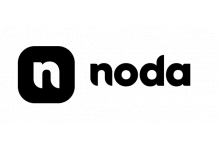Open Banking: What’s now and next?

- Satya Swarup Das, Practice Lead: Banking at Virtusa
- 28.05.2019 10:30 am Open Banking , Satya is a banking domain consultant with over 15 years of experience in both business and IT. He has worked in the banking domain for multiple clients across different geographies in the banking transformation space. His experience covers Core banking, Lending, Cards & Payments, Digital Banking, Products & Pricing, etc. Satya is an ardent writer who has been featured many times in Global Banking & Business Review, BAI- Banking Strategies, Banking Exchange, Financial IT, PaymentsSource. He holds an MBA degree from XIM, Bhubaneswar and an Engineering degree from NIT, Rourkela and is a certified CBAP, Deep Learning and Neural Networks, IBM Blockchain Essentials, Data Science Foundations Professional. He can be reached at: Twitter; LinkedIn.
It has been around one and a half years since the real open banking journey started, with the UK taking the lead. Open banking is boldness and flexibility. For ages, the financial data of customers were close to the chest for banks and customers did not have much choice. Times have changed drastically recently. Customers are starting to get more freedom of managing their financial contacts by getting rid of tight coupling with their financial institutions.
Given the fact that open banking has progressed in different parts of the world at a different pace, the end objective is the same. If we try to analyze some factors that contribute to the success and pace of open banking adoption and implementation but are rarely discussed in various forums, we get to know the deeper understanding of open banking progress.
Marketplace decides: Success of open banking adoption mainly lies in the marketplace and ecosystem that needs to adopt the offerings. It has to make sense for new customer acquisition, more revenue and operational efficiencies. Regulations and ideation platforms are enabling factors in the entire journey. Business sense is paramount for wider adoption of the same. In the Eurozone, it makes for a sense of open banking due to relaxed co-operative regulations amongst different countries. Hence we find that the first set of open banking actual adoption is being accelerated in Europe.
Regulations draw the boundaries: The word 'open' is always associated with its boundaries. Regulations decide the boundaries for openness and define exactly how 'open' is open banking. Every country has its own perspective due to their unique challenges with regard to open banking. GDPR, PSD2 (Revised Payment Services Directive) are shaping up good boundaries under which open banking will progress in future. However, the regulations are bound to accommodate changes in future based on demands.
Guidelines show the path: Recently a new version of Operational Guidelines(OG) and Customer Experience Guidelines(CEG) has been released by the Open banking Implementation Entity(OBIE). These are the steps taken as the next step towards open banking journey after basic compliance of PSD2 and RTS(Regulatory Technical Standards).
Next Steps towards Open Banking Implementation:
- The addition of CEG guidelines calls out the customer focus that is required for the entire ecosystem to abide by. It is based on 5 fundamental principles e.g. Control, Speed, Transparency, Security, trust. It also advocates the process of protection of vulnerable customers so that interest of all sections of customers is safeguarded.
- Another key area is 'issue resolution'. The OG guidelines also layout the process and procedures of issue recording, mitigation and escalation process.
- Reporting of change and communications management is another aspect of open banking roll out. Any change- cosmetic or business critical has to follow certain process of implementation and support so that there is minimum customer impact.
- The OG Checklist and CEG Checklist will help as tools to enable the participants in the open banking ecosystem to certify the delivery against the benchmarked parameters.
Open banking is here to stay and evolve more. At present, the UK based banks are the most advanced in terms of Open banking. But the other parts of the world are heating up to the open banking era. While UK is showing the way, there are different challenges in different countries. U.S. regulators have chosen to follow the UK model and learn from it to make necessary adjustments to U.S. open banking.
Day by day the potential use cases of open banking are expanding. It is expected to resolve problems in banks like enhanced fraud detection, efficient cash management, new way of KYC management, real-time reconciliations, and interoperability of bank accounts and contracts, and many more.
Conclusion:
Effective utilization of bank's data and sharing the same with other players in the ecosystem are going to drive the banking system towards a win-win situation for traditional and new age banks. Thanks to the evolution of open banking, the customers are going to be the biggest benefiters of it once they shed the inhibitions of concerns for personal data security.
























